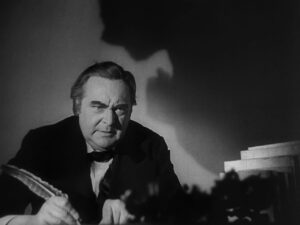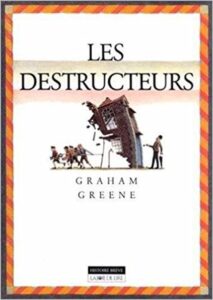The Wolf and the Crane – Story and Analysis
Aesop’s fables have long been cherished for their timeless wisdom and moral lessons. Among these captivating tales, “The Wolf and the Crane” stands out as a thought-provoking fable that imparts a valuable lesson about gratitude and reciprocity. In this article, we will explore the narrative of the story and delve into the underlying wisdom that continues to resonate with us today. It is a famous Aesop’s Fables children’s story which talks about a greedy wolf and a crane who is very silly and does not know about the world.
If you want to read another thought provoking tale from the Aesop Fables, you can read The city mouse and the country mouse or the fox and the grapes.
The short story
Once upon a time, there was a very wicked wolf. The wolf was eating a large fish. In its greed, it ate a large bone. The bone was very sharp and it got stuck in its throat. The wolf howled in pain.
“Oh the bone hurts so much. What should I do to get it out? Maybe I should cough?” he thought.
He tried to cough and get it out.
“Cough!! Cough!!” he loudly coughed. But the bone did not move and was still in his throat.
“Oh the bone hurts so much. What should I do to get it out? Maybe I should drink water?” he thought.
He gulped down a lot of water.
“Gulp!! Gulp!!” he drank the water. But the bone did not move and was still in his throat.
“Oh the bone hurts so much. What should I do to get it out? Maybe I should eat some more?” he thought.
He ate one more piece of fish.
“Crunch!! Crunch!!” he ate the fish. But the bone did not move and was still in his throat.
“Oh the bone hurts so much. What should I do to get it out? I need help” he thought.
He walked around and saw a crane. He saw that the crane had a very long neck and a very long beak.
“If the crane puts its beak and head down my throat, it can take out the bone” thought the wolf. The wolf went to the crane and spoke to it.
“Mrs Crane. A piece of bone is stuck to my throat. Can you please help me out? I will reward you very well.”
The crane knew the wolf was wicked but she was greedy. She thought to herself “But I want the reward so much. Maybe the wolf will give me so many fish that I don’t need to hunt ever again”
“Of course, Mr Wolf. I shall help you”, said the crane and reached down his throat and pulled the bone out. The wolf was very happy and thanked the crane.
“Thank you Mrs. Crane. I shall be leaving now”, he said walking away.
“But you promised me a reward Mr Wolf”, said the greedy crane.
The wolf turned and growled at the crane.
“Reward? Did I not give you your reward already? I did not eat you when you put your head down my throat. Don’t you think that is a good reward?”
Saying so, the wolf walked away and the crane learnt a lesson.
The moral of the wolf and the crane story:
The moral of the “Wolf and The crane” story is: Expect no reward for serving the wicked.
“The Wolf and the Crane” imparts a valuable lesson about gratitude and reciprocity, urging us to appreciate and reciprocate acts of kindness. The fable serves as a reminder to express gratitude for the help we receive and to be willing to reciprocate when others extend their assistance. By applying the wisdom of this fable to our lives, we can cultivate a spirit of gratitude, foster meaningful connections, and contribute to a more harmonious and supportive community. Let us draw inspiration from Aesop’s fables and embrace the virtues of gratitude and reciprocation in our interactions with others.
Simple Questions and Answers on the wolf and the crane story
Questions
- What got stuck in the wolf’s throat?
- What did the wolf try to do to relieve his pain?
- What reward did the wolf give the crane?
- What is the moral of the story?
Answers
- A bone got stuck in the wolf’s throat.
- The wolf drank water and tried to cough.
- The wolf said that he did not eat the crane and that is the reward.
- The moral of the story is that you should not help wicked people and then expect them to reward you.
Other common questions and answers
- What is the moral lesson of “The Wolf and the Crane”?
- The fable teaches the importance of gratitude and reciprocity. It emphasizes the notion that acts of kindness and assistance should be met with appreciation and a willingness to reciprocate.
- What was the situation faced by the wolf in the story?
- The wolf had a bone stuck in his throat, causing distress and discomfort.
- How did the crane help the wolf?
- The crane used her long beak to reach inside the wolf’s throat and extract the bone, saving the wolf’s life.
- How did the wolf respond to the crane’s request for a reward?
- The wolf showed no gratitude and dismissed the crane, refusing to offer any reward or reciprocation for her service.
- What is the significance of the wolf’s behavior in the story?
- The wolf’s behavior highlights ingratitude and a lack of appreciation for the crane’s assistance. It serves as a cautionary tale about the importance of recognizing and reciprocating acts of kindness.
Summary of the story
“The Wolf and the Crane” tells the story of a wolf that had a bone stuck in his throat. In great distress, the wolf sought help from various animals but found no success. Finally, a crane offered to assist, explaining that her long beak could reach inside the wolf’s throat and extract the bone. The grateful wolf agreed, and the crane successfully removed the bone, saving the wolf’s life.
However, when the crane requested a reward for her service, the wolf dismissed her, showing no gratitude or willingness to reciprocate her kindness.
Analysis of the story
Gratitude and Reciprocity: “The Wolf and the Crane” teaches us to express gratitude and reciprocate acts of kindness. By acknowledging and appreciating the assistance we receive, we can foster positive relationships and a sense of mutual support.
Importance of Recognizing Help: The fable reminds us to value the help we receive from others. Whether it is a small favor or a significant act of assistance, recognizing and acknowledging the efforts of others can strengthen connections and build a culture of gratitude.
Cultivating a Spirit of Reciprocation: The story prompts us to develop a mindset of reciprocation. By actively seeking opportunities to assist others and repay kindness, we can create a cycle of mutual support and foster a sense of community.




